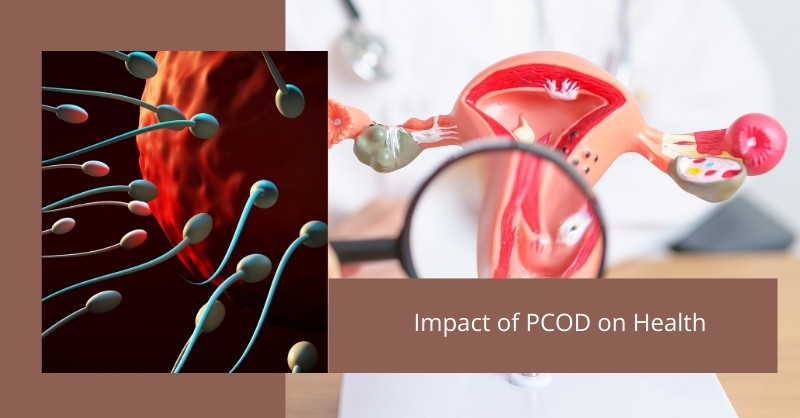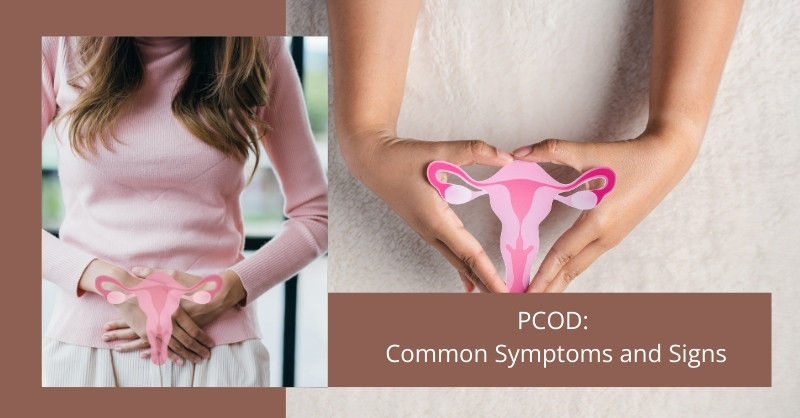Polycystic Ovarian Disease (PCOD) is a hormonal disorder affecting many women worldwide. Recognizing the symptoms and understanding the signs of PCOD is vital for early diagnosis and effective management. This article delves deeply into the causes, symptoms, complications, and lifestyle adjustments that can help manage PCOD effectively.
What is Polycystic Ovarian Disease?
PCOD, or Polycystic Ovarian Disease, is a condition in which the ovaries produce excessive androgens (male hormones) that interfere with normal reproductive functions. Women with Polycystic Ovarian Disease may have multiple immature or partially developed eggs that turn into cysts over time, disrupting hormonal balance and leading to several physical and emotional symptoms.
The condition is often confused with Polycystic Ovary Syndrome (PCOS), but the two differ slightly in terms of severity and symptoms. PCOD primarily affects ovarian functioning, while PCOS is a metabolic disorder affecting the entire endocrine system.
Common Symptoms of PCOD
The symptoms of Polycystic Ovarian Disease can vary widely among women. Some may experience severe symptoms, while others might have milder effects. Below are the most common symptoms:
| Symptom | Description |
|---|---|
| Irregular Periods | Cycles that are too long, too short, or entirely absent due to disrupted ovulation. |
| Acne | Persistent acne caused by elevated androgen levels, which increase oil production in the skin. |
| Hair Loss | Thinning hair or male-pattern baldness as a result of hormonal imbalances. |
| Weight Gain | Unexplained weight gain or difficulty losing weight due to insulin resistance, a common feature of PCOD. |
| Hirsutism | Excessive growth of hair on the face, chest, or back, commonly seen in women with high androgen levels. |
Additional symptoms include fatigue, mood swings, and darkened skin patches (acanthosis nigricans). Let us explore these in more detail:
Irregular Periods
One of the hallmark symptoms of Polycystic Ovarian Disease is irregular menstrual cycles. Women may experience skipped periods, prolonged cycles lasting more than 35 days, or in some cases, complete absence of menstruation (amenorrhea). These irregularities arise from disrupted ovulation, where the ovary fails to release an egg monthly. This symptom often leads women to seek medical advice.
Persistent Acne
Hormonal fluctuations in Polycystic Ovarian Disease lead to elevated androgen levels, which increase oil production in the skin. This results in persistent and often severe acne, particularly around the jawline and chin. Unlike regular acne, PCOD-related acne may not respond well to conventional treatments.
Hair Loss
Hair thinning or male-pattern baldness is another distressing symptom of PCOD. The excess androgens in the system can shrink hair follicles, leading to progressive hair loss on the scalp, particularly near the crown area.
Weight Gain
Weight gain is a common struggle for women with PCOD. Insulin resistance, a key feature of the condition, makes it difficult to maintain or lose weight despite efforts. This weight gain is often centralized around the abdominal area, which increases the risk of cardiovascular and metabolic issues.
Hirsutism
Hirsutism, or excessive hair growth in areas typically associated with male patterns (such as the face, chest, and back), is a noticeable symptom. This occurs due to high androgen levels and can be a significant source of emotional distress for women.
Other Symptoms
Women with PCOD may also experience other symptoms such as fatigue, mood swings, and darkened skin patches. Fatigue is often linked to hormonal imbalances and poor sleep quality, while mood swings and depression may result from the psychological impact of the condition and fluctuating hormone levels. Acanthosis nigricans, characterized by dark, velvety patches on the skin, typically appears in areas like the neck, armpits, and groin and is associated with insulin resistance.
Impact of PCOD on Health

PCOD is not just a reproductive issue; it has far-reaching effects on a woman’s overall health. Below are some of the significant complications:
- Infertility: One of the most distressing impacts of PCOD is the difficulty in conceiving due to irregular ovulation.
- Insulin Resistance: PCOD often leads to insulin resistance, increasing the risk of developing type 2 diabetes.
- Mental Health Issues: Women with PCOD are more prone to anxiety and depression due to hormonal imbalances and the psychological impact of the condition.
- Endometrial Hyperplasia: The thickening of the uterine lining, which can lead to severe complications if not monitored.
- Cardiovascular Problems: Elevated cholesterol and triglyceride levels in women with PCOD increase the risk of heart disease.
Causes of PCOD
The exact cause of PCOD remains unknown, but several factors contribute to its development:
- Genetics: A family history of PCOD or similar hormonal disorders increases the likelihood of developing the condition.
- Insulin Resistance: Insulin resistance leads to elevated insulin levels, which stimulate the ovaries to produce more androgens.
- Inflammation: Low-grade inflammation is linked to excessive androgen production in women with PCOD.
Diagnosing PCOD
Diagnosing PCOD typically involves a combination of medical history, physical examination, and laboratory tests. Healthcare providers may look for the following:
- Presence of irregular menstrual cycles.
- Signs of high androgen levels, such as excessive hair growth or acne.
- Ultrasound to detect cysts in the ovaries.
- Blood tests to measure hormone levels and rule out other conditions.
PCOD and Lifestyle Management

While PCOD cannot be completely cured, lifestyle modifications can significantly alleviate symptoms and prevent complications. These include dietary changes, exercise, and stress management.
Dietary Recommendations
Nutrition plays a vital role in managing PCOD. A balanced diet can help regulate hormones, improve insulin sensitivity, and maintain a healthy weight.
| Food Group | Recommended Foods | Avoid |
|---|---|---|
| Carbohydrates | Whole grains, quinoa, sweet potatoes | Refined sugars, white bread |
| Proteins | Lean meats, eggs, legumes | Processed meats |
| Fats | Olive oil, avocados, nuts | Trans fats, fried foods |
| Fruits and Vegetables | Berries, spinach, broccoli | High-sugar fruits |
Exercise and PCOD
Regular physical activity is essential for women with PCOD. It helps improve insulin sensitivity, supports weight management, and enhances overall well-being. Effective exercises include:
- Aerobic Exercises: Brisk walking, cycling, or swimming.
- Strength Training: Weightlifting and resistance exercises to build muscle and boost metabolism.
- Mind-Body Exercises: Yoga and Pilates to reduce stress and improve hormonal balance.
- Diet
- Exercise
- Medical Management
Stress Management
Stress exacerbates hormonal imbalances in PCOD. Practicing mindfulness, meditation, and breathing exercises can help reduce stress levels and improve overall health.
Medical Management
In addition to lifestyle changes, medical interventions may be necessary for managing PCOD symptoms. Common treatments include:
- Hormonal Birth Control: To regulate menstrual cycles and reduce androgen levels.
- Metformin: To improve insulin sensitivity and control blood sugar levels.
- Fertility Treatments: For women trying to conceive, ovulation-inducing medications may be prescribed.

Conclusion
Understanding the common symptoms and signs of PCOD is the first step toward effective management. By adopting healthy lifestyle changes, consulting healthcare professionals, and staying informed, women can significantly reduce the impact of PCOD on their lives. Early intervention, combined with the right support, can help women lead fulfilling, healthy lives despite the challenges of Polycystic Ovarian Disease.



